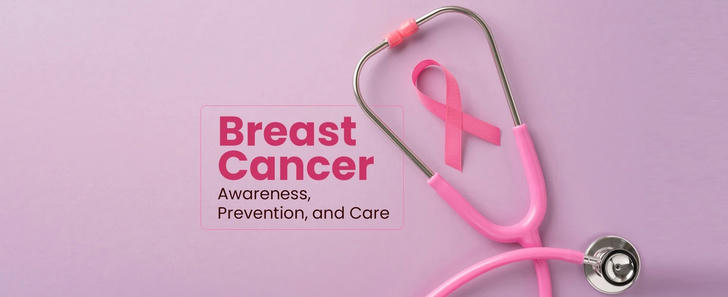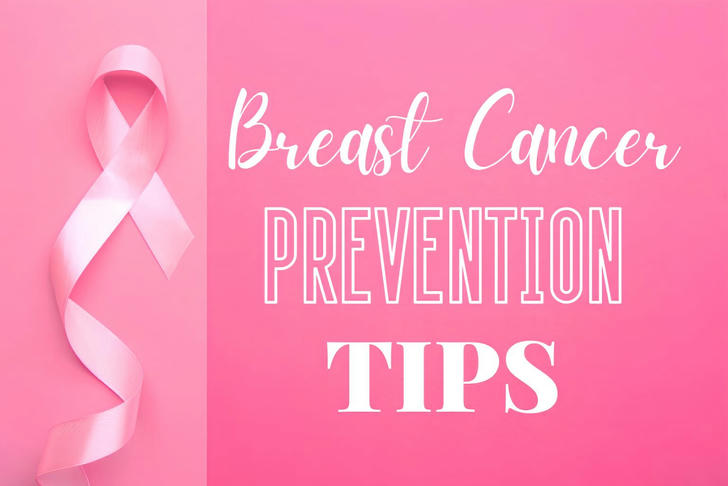Understanding Breast Cancer in the U.S.: Facts, Risks, and Prevention
Breast cancer is one of the most commonly diagnosed cancers in the United States, affecting millions of individuals each year. It's a disease that transcends age, ethnicity, and background, but with early detection, advanced treatments, and ongoing research, it is increasingly possible to manage and even overcome. In this article, we’ll explore the basics of breast cancer, its risk factors, prevention tips, and the latest advancements in research.

What Is Breast Cancer? 💡
Breast cancer occurs when abnormal cells in the breast tissue begin to grow uncontrollably. These cells can form tumors, which may be felt as lumps in the breast or detected through imaging tests like mammograms. The condition can develop in various parts of the breast, including the milk ducts, lobules, or tissue in between.
There are two primary types of breast cancer:
Invasive (infiltrating) breast cancer: This type of cancer has spread from its original location in the milk ducts or lobules to the surrounding breast tissue and beyond.
Non-invasive (in situ) breast cancer: This is early-stage cancer that has not yet spread beyond the duct or lobule where it began.
Risk Factors for Breast Cancer 🧬
While the exact cause of breast cancer is still not fully understood, several risk factors have been identified. It’s important to note that having one or more of these risk factors doesn’t mean you will definitely develop breast cancer, but they do increase the likelihood. Here are some of the most common risk factors:
Gender: Women are at much higher risk than men, with about 1 in 8 women in the U.S. developing breast cancer in their lifetime.
Age: The risk increases as you age, particularly after the age of 50. The majority of breast cancer cases are diagnosed in women over 50.
Family History: If you have close relatives (mother, sister, daughter) who have had breast cancer, your risk may be higher. However, up to 85% of breast cancer cases occur in women without a family history of the disease.
Genetic Mutations: Certain inherited genes, such as BRCA1 and BRCA2, increase the risk of developing breast cancer. These genes also raise the risk of ovarian cancer.
Personal Health History: Women who have had breast cancer in one breast are at an increased risk of developing it in the other breast.
Hormone Replacement Therapy (HRT): Long-term use of combined estrogen and progesterone increases the risk of breast cancer.
Symptoms of Breast Cancer 👩⚕️
Breast cancer may not show symptoms in its early stages, which is why regular screenings are essential. However, as the disease progresses, the following symptoms may appear:
A lump in the breast or underarm: A painless lump is the most common symptom, although some lumps can be tender or painful.
Change in breast shape or size: A noticeable change in the size, shape, or symmetry of the breast.
Skin changes: Skin redness, dimpling, or an appearance similar to an orange peel.
Nipple discharge: Clear or bloody discharge coming from the nipple.
Pain: Pain or tenderness in the breast, though this is not always a sign of cancer.
If you notice any of these symptoms, it’s crucial to consult a healthcare provider for evaluation and possible testing.
Early Detection: Saving Lives 🚨
Early detection is one of the most effective ways to improve survival rates for breast cancer. Mammograms, which are X-ray images of the breast, are the most common screening method used to detect breast cancer in its earliest stages.
According to the American Cancer Society, regular mammograms can reduce the risk of dying from breast cancer by as much as 25%. The ACS recommends that women aged 45 to 54 should have annual mammograms, and women aged 55 and older should transition to biennial screening or have the option to continue annual mammograms.
In addition to mammograms, breast self-exams and clinical breast exams (performed by healthcare providers) are recommended as part of a comprehensive approach to detecting breast cancer early.
Treatment Options 🏥
Advances in breast cancer treatment have improved over the years, with a wide range of therapies available to patients. Treatment options depend on the type, stage, and genetic makeup of the cancer, as well as the patient’s overall health and preferences. The most common treatments for breast cancer include:
Surgery: Involves removing the tumor or entire breast (mastectomy) to eliminate cancerous cells.
Radiation Therapy: Uses high-energy rays to target and kill cancer cells.
Chemotherapy: Involves using drugs to destroy cancer cells, often used before surgery (neoadjuvant) or after surgery (adjuvant).
Hormone Therapy: Blockers like Tamoxifen prevent hormones from stimulating the growth of hormone-sensitive breast cancers.
Targeted Therapy: Drugs like Herceptin target specific molecules involved in cancer cell growth.
Immunotherapy: A newer treatment that helps the immune system fight cancer cells.
Real-Life Example: A Survivor’s Story 🎗️
One inspiring story comes from Sheryl Crow, the famous singer and songwriter, who was diagnosed with breast cancer in 2006. Crow underwent surgery and radiation therapy and has been cancer-free ever since. Her story is a testament to the power of early detection and the positive impact of treatment. In interviews, Crow has been vocal about her experience, encouraging women to prioritize their health and take part in regular screenings.
Crow’s success story is not unique. Advances in breast cancer treatment, along with early detection, have led to dramatic improvements in survival rates. According to the American Cancer Society, the 5-year relative survival rate for localized breast cancer is about 99%, which highlights the importance of early intervention.

Prevention: Taking Charge of Your Health 🌟
While you can't control some risk factors, such as family history or genetics, there are several lifestyle changes and habits that can help reduce your risk of developing breast cancer:
Maintain a healthy weight: Being overweight or obese increases the risk of breast cancer, especially after menopause.
Stay physically active: Regular exercise has been shown to lower the risk of breast cancer.
Limit alcohol consumption: The more alcohol you drink, the higher your risk of developing breast cancer.
Breastfeed: If possible, breastfeeding can reduce a woman’s risk of developing breast cancer later in life.
Consider genetic counseling: If you have a family history of breast cancer, talking to a genetic counselor can help determine whether genetic testing is appropriate.
Moving Forward: Research and Hope 🔬
The fight against breast cancer is ongoing, but significant strides are being made. Researchers are constantly working to better understand the disease, improve treatment options, and enhance early detection methods. In recent years, breakthroughs in immunotherapy and personalized medicine are giving hope to those diagnosed with advanced stages of breast cancer.
According to the National Cancer Institute, research funding for breast cancer has led to the development of drugs that target specific genetic mutations and new forms of radiation that are more precise and less damaging.
Conclusion: Knowledge Is Power 📚
Breast cancer affects millions of people, but with early detection, proper treatment, and prevention strategies, the outlook is improving. Through awareness, research, and support for those battling the disease, we can continue making progress. Women (and men) are encouraged to stay informed, get screened, and live healthier lives.
If you’re in the U.S., remember to visit the National Breast Cancer Foundation or the American Cancer Society for resources, support, and more information on breast cancer detection and treatment.
By taking charge of your health, you can contribute to reducing the impact of this disease. Stay proactive, stay informed, and, most importantly, stay hopeful. 💖
